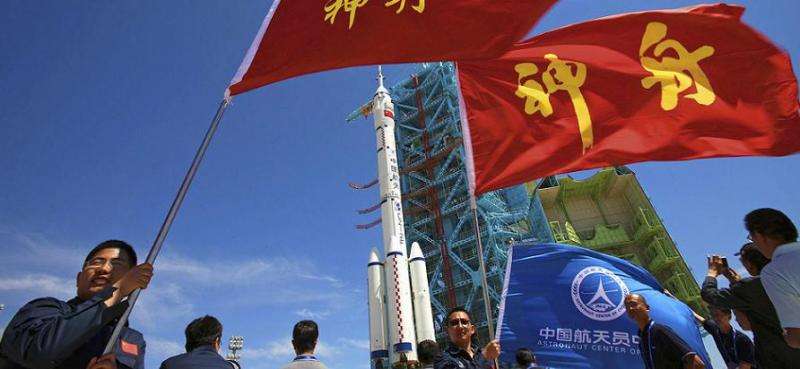China plans more than 20 space launches in 2016

China has announced its busy 2016 launch manifest, with more than 20 missions scheduled for this year. The country that conducted 19 successful space flights in 2015, intends to launch its Tiangong 2 space laboratory and a manned spacecraft Shenzhou 11, among other military and commercial orbital missions.
The first Chinese launch this year will be carried out on Jan. 15, when a Long March 3B rocket will blastoff the Belintersat 1 communications satellite for Belarus. Liftoff will take place from the Xichang Satellite Launch Center, located in Sichuan Province. The spacecraft was built by the China Aerospace Science and Technology Corporation and is China's first communications satellite exported to Europe.
On Apr. 30, the country plans to deliver two Argentinian Earth-observing satellites, named ÑuSat-1 and ÑuSat-2 for the Aleph-1 constellation. A Long March 4B booster will be employed for this mission slated to be launched from the Taiyuan Satellite Launch Center in Shanxi Province.
Only these two launch dates were disclosed by Chinese media so far. Other launches are targeted for certain months or halves of the year with exact dates TBD. Several missions are still unassigned to any specific period of the year.
The most important and apparently attention-grabbing Chinese orbital mission in 2016 will be sending a trio of astronauts into space. The crew will fly onboard the Shenzhou 11 spacecraft, expected to be launched by a Long March 2F – a carrier rocket designed for manned missions. Liftoff will be conducted from the Jiuquan Satellite Launch Centre in Gansu Province in the second half of the year. China hasn't yet released any information about the crew of this flight.
Shenzhou 11 will dock with the space laboratory Tiangong 2 that will be launched in the first half of 2016, also by the Long March 2F booster and from the Jiuquan Satellite Launch Centre. Along with Tiangong 2, a small Banxing-2 satellite, probably a technology demonstrator, will piggy back on the mission.
This year will see maiden flights of the next-generation Long March 5 and Long March 7 rockets. Long March 5 is a 198 feet (60.5 meters) tall heavy lift launch vehicle designed to be able to deliver up to 25 tons of payload to the low Earth orbit (LEO) and up to 14 tons to the geostationary transfer orbit (GTO). Weighing approximately 643 tons, it will be the heaviest and most technologically challenging member of the Long March rocket family. China Academy of Launch Vehicle Technology is carrying out final tests of this booster to prepare it for its first flight scheduled for September.
The 174.2 feet (53 meters) tall Long March 7 is a medium-heavy launch vehicle with a mass of 594 tons. It will be capable of launching nearly 13.5 tons into LEO and about 5.5 tons into a sun-synchronous orbit (SSO). Although, this booster is designed to deliver satellites into space, its structure is based on Long March 2F rocket employed for manned missions. The date of first Long March flight hasn't been disclosed yet.
China will also launch this year two satellites for its homegrown Beidou Navigation Satellite System and three Gaofen spacecraft for its High-Resolution Earth Observation System. One of the Beidou launches is planned for February. Other dates are currently unknown for the public.
Among other noticeable Chinese missions to be conducted in 2016 are: Chinese Carbon Dioxide Observation Satellite Mission or TanSa and Quantum Science Satellite (QSS). These two scientific satellites will be probably launched in July.
2016 will see the launch of China's Hard X-ray Modulation Telescope (HXMT). It is an x-ray space observatory designed to explore the fundamental physics processes in the very early universe or in the proximity of black hole horizons.
The busy launch schedule will include also several missions for Chinese army. However due to their military nature, no information is currently available about these flights.
With the launches of Shenzhou and Tiangong, this year could be the stepping stone for China towards establishing its own space station. The launch of the core module of this space station is planned for 2018 to test related technologies and to research engineering issues. The station could become fully operational around 2022.
Source: Astrowatch.net



















